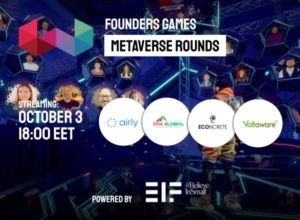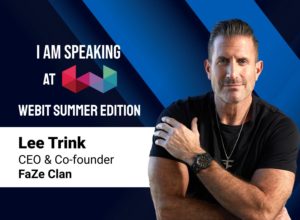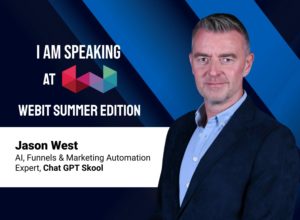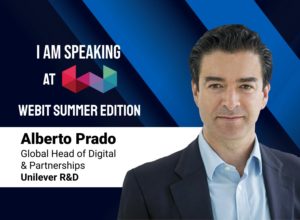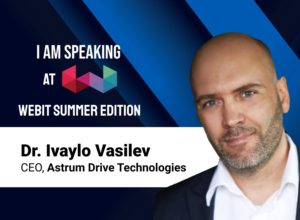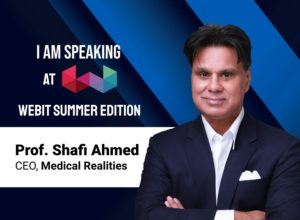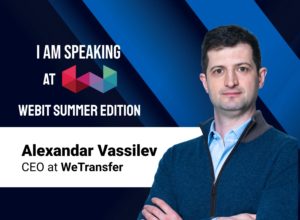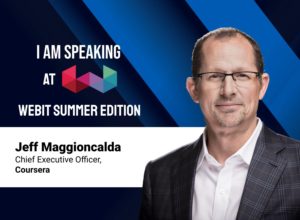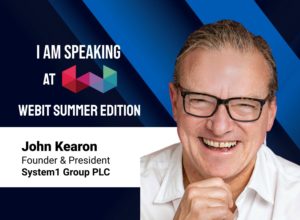🚀 Exciting News! Introducing the Founders Games Metaverse Project 🌐
Are you ready to embark on a journey into the boundless world of the metaverse? We're thrilled to announce the launch of the Founders Games Metaverse Project powered by European Investment Fund, where we're bridging the gap between the real world and the metaverse to explore the pinnacle of human potential and technology.
🌎 Our very first episode is coming your way, featuring the Cleantech vertical! Here's a sneak peek of our fantastic lineup:
🚀 Startups pitching on stage:
- Jurgen Van Leeuwen, Global Head of Growth at Airly
- Steve Meller, CEO of CH4 Global
- Ido Sella, CEO of ECOncrete
- Sergey Ogorodnov, CEO of Voltaware
🌟 And that's not all! We've got an amazing jury ready to score these innovative pitches:
- Dr. Michael Hoeck, EarlyBird
- Marie-Helene Ametsreiter, Speedinvest
- Florian Erber, Ananda Impact Ventures
- Thomas Bigagli, Plug & Play Tech Center
- Dr. Plamen Russev, Webit Investment Network
🎉 Get ready for some inspiring cleantech solutions and intense competition! Stay tuned for the action-packed episode! 📺🌱
Every week, we'll bring you a captivating showcase of remarkable technologies that are pushing the boundaries of innovation. Get ready to witness a revolution as we unveil exclusive insights into cutting-edge ideas and groundbreaking technologies that are reshaping entire industries!
Join us on this incredible journey where the real world meets the metaverse, and human potential meets technology. Stay tuned for updates, sneak peeks, and the latest from the Founders Games Metaverse Project powered by European Investment Fund.
#FoundersGamesMetaverseProject #CleantechInnovation #StartupShowdown #StayTuned
Link to stream:
https://www.foundersgames.org/2023/event-2023-10-cleantech.php
Speaking at Webit: Lee Trink, CEO & Co-founder FaZe Clan
🎉💥 With only a week to go before Webit, we are thrilled to announce the phenomenal Lee Trink is joining our speaker lineup!
Why I shoud not miss his speech?
As the CEO and co-founder of FaZe Clan, the largest and most followed esports and gaming organization globally, Trink possesses unparalleled industry expertise. His deep understanding of the esports landscape, coupled with his extensive experience in entertainment and brand building, makes his insights highly valuable. By attending his speech, you have the opportunity to tap into his wealth of knowledge and gain a comprehensive understanding of the esports industry's current trends and future directions.
What will I learn?
As an industry leader, Trink's speech will touch upon the future trends, advancements, and opportunities in esports. You can gain insights into emerging technologies, evolving audience preferences, and the potential impact of AI, virtual reality, and other technologies on the esports landscape. This knowledge can help you stay informed and make informed decisions in your own esports-related endeavors.
Read more about him
Lee Trink is an entrepreneur in the entertainment and media industries focused on the convergence of gaming and entertainment as both a cultural movement and an explosive business. As the CEO and co-owner of FaZe Clan, the largest, most followed esports and gaming organization in the world, he is creating a brand that extends beyond esports to mainstream entertainment through content, collaborations and e-commerce.
⚡️ Trink began his career as an Assistant District Attorney in Brooklyn. With a true passion for music and a creative business mind, he sought an opportunity to bridge his legal background with entertainment. It’s at that moment he began his illustrious career moving through the ranks to eventually lead some of the most well-known music labels in the world.
🎵 In 2001, Trink served as General Manager for artist-first label Lava Records. He went on to lead Virgin Records as General Manager and COO with much success, ultimately resulting in his promotion to President of EMI’s Capitol Music Group. He launched the careers of global superstars such as Katy Perry and Jared Leto’s 30 seconds to mars, along with architecting global marketing campaigns for The Rolling Stones, Coldplay, and Lenny Kravitz, among others.
Following his tenure at EMI, Trink built his own business where he managed multi-platinum global recording artists such as Kid Rock, The Backstreet Boys and Ice Cube; produced a charity album for the King of Thailand; and worked with iconic brands, such as General Motors, Harley-Davidson and Jim Beam. In this role, he also co-produced the Tony Scott directed “Unstoppable” starring Denzel Washington as well as Sean Penn’s short film "Americans”.
🎮🔥 At FaZe Clan, Trink is on a mission to change the way people think about esports -- not as a niche sport for gamers, but as an entertainment juggernaut. His 25-year career delivers the conviction, ammunition and playbook to make this vision a reality. He’s joining Webit for a fireside chat to share his expertise in esports and AI’s application in the field.
⚠️⏰ Don't wait, act fast! Seats are filling up quickly, and you don't want to miss out on this exclusive opportunity to hear from the best in the industry. Reserve your spot today and get ready to level up your knowledge of AI in esports!
🗓️ Save the date: 28th June, 2023
📍 Venue: National Palace of Culture, Sofia, Bulgaria
Speaking at Webit: Jason West, AI, Funnels & Marketing Automation Expert,...
🔥 Get ready for an incredible speaker at Webit this June - Jason West, the AI, Funnels & Marketing Automation Expert behind Chat GPT Skool!
Why you should not miss Jason's speech?
Recently, Mr. West's fascination with AI has led him to explore innovative ways to boost business owners' productivity. He empowers online entrepreneurs to harness the potential of AI, funnels, and marketing automation to elevate their income and efficiency. One of his groundbreaking products, Chat GPT Skool, helps people learn how to double productivity and unlock the full potential of ChatGPT for exponential business growth.
What you will learn?
Join us at Webit and be inspired by Jason's expertise in AI and its application in business. Discover how this cutting-edge technology can revolutionize your operations and drive remarkable results. Secure your tickets now for an enlightening experience!
Read more about Jason
💡 With over 23 years of extensive online experience, Jason has mastered various aspects of the digital landscape, from e-commerce stores and affiliate marketing to software development and web design.
For the past 4 years, he has been laser-focused on creating high-converting sales funnel templates for entrepreneurs, coaches, consultants, and online business owners worldwide. He understands the challenges that technology can pose and strives to alleviate the stress by providing effective solutions.
🗓️ Save the date: 28th June, 2023
📍 Venue: National Palace of Culture, Sofia, Bulgaria
Speaking at Webit: Alberto Prado Global Head of Digital & Partnerships...
🚀 Get ready to embark on a transformative journey at Webit, as we present Alberto Prado, the Head of R&D Digital & Partnerships at Unilever!
Why you should not miss Alberto's speech?
Alberto's impressive background as the Global Head of Digital & Partnerships at Unilever R&D speaks volumes about his expertise in the field. With experience in leading digital transformation initiatives, overseeing AI investments, and driving innovation programs, Alberto brings a wealth of knowledge and practical insights to the table.What will you learn?
Alberto's leadership in external ecosystem engagements emphasizes the importance of collaboration in accelerating innovation. Through his speech, you will gain insights into successful collaboration models, partnerships, and ecosystem engagements that leverage AI technologies to drive innovation. This knowledge will enable you to understand the value of collaborative approaches in realizing the full potential of AI-driven innovation.More about Alberto
💡 Alberto is the Global Head of Digital & Partnerships at Unilever R&D. He leads the Digital Transformation of R&D to maximize the value of data and AI for scientific discovery, process engineering, and new business models. He also leads external ecosystem engagements to accelerate innovation through collaboration. Prior to Unilever, Alberto set up and led the Digital Innovation Accelerator at Royal Philips to boost innovation and a culture of entrepreneurship. During that period, he chaired the AI Council, providing oversight and steer on company-wide AI-related investments in innovation. Previously, he led the innovation transformation program that delivered the first wave of Philips connected consumer products (IoT) and new business models. 🔥 Alberto started his professional career in management consulting, followed by executive roles at NEC, Symbian Software, and Nokia. He graduated in Engineering and Economics at the Karlsruhe Institute of Technology (Germany) and holds an MBA from INSEAD (France). 🚀 If you want to learn more, join us at Webit to hear Alberto's insightful perspectives and innovative ideas! 🗓️ Save the date: 28th June, 2023 📍 Venue: National Palace of Culture, Sofia, BulgariaSpeaking at Webit: Dr. Ivaylo Vasilev, CEO of Astrum Drive Technologies
🌌 Calling all space enthusiasts and forward-thinking pioneers in our global community! We are thrilled to announce that Webit will welcome the brilliant CEO of Astrum Drive Technologies, Dr. Ivaylo Vasilev, to our stage this June.
Why you should not miss Ivaylo's speech?
Fluid simulations play a crucial role in various space-related applications, such as spacecraft design, aerodynamics, and propulsion systems. Understanding how AI can be utilized for fluid simulations and optimizations can provide valuable insights into improving space technology development.
What will you learn?
As the CEO of Astrum Drive Technologies, Dr. Ivaylo Vassilev can provide valuable insights into current industry trends and the future outlook for AI-driven advancements in space technologies. This will include emerging technologies, research directions, and potential breakthroughs in the field.
More about Ivaylo
💡 With a remarkable track record of completing over 50 successful projects for Fortune 500 companies, Dr. Vasilev is a seasoned project manager with over 20 years of experience. Hailing from Sofia, Bulgaria, his expertise spans multiple fields, including engineering, AI - in which he has a Ph.D. - international project management, and business administration, earning him prestigious degrees from renowned institutions worldwide.
As the CEO of Astrum Drive Technologies, Ivaylo leads groundbreaking research and development in advanced propulsion systems. Pioneering the world's first propellant-less electrical propulsion which can work in space, Astrum Drive is laying the groundwork for revolutionizing space travel.
🔥 Driven by the guiding principle “Aut inveniam viam aut faciam” (I shall either find a way or make one), Dr. Vasilev has a passion for pushing the boundaries of what is possible. His company has a clear goal - lead mankind to become a truly spacefaring civilization - and his leadership has been instrumental in allowing Astrum Drive to stay ahead in a rapidly-evolving industry.
🚀 If you want to learn more, join us at Webit to hear Dr. Vasilev's insightful perspectives and innovative ideas!
🗓️ Save the date: 28th June, 2023
📍 Venue: National Palace of Culture, Sofia, Bulgaria
Don’t miss his keynote at Webit: he will provide valuable insights...
📢 Get ready to be blown away, Webitters! We're proud to announce that Professor Shafi Ahmed, the CEO of Medical Realities and an extraordinary cancer surgeon, will be live at Webit.
Why should you not miss professor Shafi speech?
Don’t miss his keynote at Webit: he will provide valuable insights into the disruptive and revolutionizing power of AI in healthcare.
What will you learn?
By attending, you will learn how AI is becoming a vital technology to improve patient outcomes, experience, and journey, by aiding precision during surgical operations and alleviating the workload of clinicians for instance.
More about professor Shafi
🏆 Professor Shafi Ahmed's pioneering spirit has earned him numerous accolades, including the Future NHS Award and the prestigious Silver Scalpel for his exceptional surgical expertise. He has been hailed as the world's most watched surgeon, captivating millions with live streamed operations through cutting-edge technologies like Google Glass and Virtual Reality. His incredible work even caught the attention of BAFTA, earning him a nomination for Operation Live.
🌍 As an advisor to the government, Prof. Ahmed plays a vital role in shaping the future of healthcare through digital transformation. His humanitarian work and his dedication to global surgical education has taken him to over 20 countries, including conflict zones, earning him a Nobel Peace Prize nomination in 2020.
Co-founding Medical Realities, a groundbreaking VR education company, Professor Ahmed is at the forefront of revolutionizing medical training. He advises major medtech and pharma companies, constantly pushing the boundaries of what's possible. His exceptional knowledge has led him to be a sought-after speaker, delivering over 250 keynotes on innovation, the future of healthcare, and digital transformation in over 30 countries.Join us and gain exclusive insights from one of the top 20 global influencers in digital health and innovation. Grab your tickets now!
🗓️ Save the date: 28th June, 2023
📍 Venue: National Palace of Culture, Sofia, Bulgaria
Speaking at Webit: Alexandar Vassilev CEO at WeTransfer
🌟 Beyond excited to unveil our next remarkable speaker: Mr. Alexandar Vassilev, the CEO of WeTransfer.
Why should you not miss Alexander’s speech?
👀 You shouldn’t miss his session at Webit, because he will offer a unique perspective on the impact of new technologies, including AI, in the context of the market and creative industry. While his company hasn't implemented AI yet, he will discuss the macro themes surrounding AI and its connection to the current market.
What will you learn?
By attending, you will learn about the potential reduction of barriers for content creation and how AI could significantly increase the consumption of digital content. Gain insights into how creators can differentiate themselves and seek platforms that foster direct relationships with their audience. Additionally, he will share examples of how WeTransfer prioritizes sustainable growth and addresses real problems for its users, providing valuable lessons for businesses and entrepreneurs.
More about Alexandar
🚀 Alexandar Vassilev is no stranger to leading innovation and fostering success. With a strong background in product-led growth, he joined WeTransfer as the Chief Product and Technology Officer in 2020, bringing together cutting-edge advancements and engineering across the entire product suite. In 2022, he assumed the position of CEO, leading the company to new heights. He also played a pivotal role in the successful launch of WeTransfer Premium, revolutionizing the way users engage with the platform.
Having spent nearly a decade at Google, including YouTube, Alexandar witnessed the rise of creators embracing digital platforms to forge their careers. He is passionate about serving this vibrant community in the long-term, through continuous innovation and the introduction of new features.
🔥 With his wealth of experience and innovative mindset, he is sure to provide for an engaging and thought-provoking session, so make sure to secure your spot today!
🗓️ Save the date: 28th June, 2023
📍 Venue: National Palace of Culture, Sofia, Bulgaria
Speaking at Webit: Jeff Maggioncalda, CEO at Coursera
🎉 We’re extremely happy to announce that Coursera’s CEO, Jeff Maggioncalda is the latest addition to Webit’s speaker lineup!
Why you should not miss Jeff's speech?
Thought leadership in AI and education: Jeff's leadership role at Coursera, a platform that leverages AI for personalized learning experiences, makes him an authority on the subject. He is likely to share valuable insights on the role of language models like ChatGPT in shaping the future of online education, as well as the specific features and capabilities of AI that can benefit students who lack access to in-person instruction.
Strategic vision for the future: By attending Jeff's speech, you will gain valuable insights into the future of AI in online education. Jeff's perspectives on how Coursera plans to navigate the opportunities and challenges presented by AI will provide you with a glimpse into the strategic direction of one of the leading platforms in the industry.
What you will learn?
What you will learn?
The role of AI in shaping online education: Jeff will share his vision on how AI, specifically language models like ChatGPT, can revolutionize online education. He will discuss the potential applications of AI in improving learning experiences, enhancing content delivery, and personalizing instruction for learners.
Specific benefits of generative AI for students without in-person instruction: Jeff will delve into the specific features and capabilities of generative AI that can be most beneficial for students who lack access to traditional classroom settings or personalized guidance. He may touch upon how AI can provide tailored learning materials, adaptive assessments, and virtual tutoring to bridge the gap for these students.
More about Jeff?
🚀 With Jeff at the helm, Coursera has revolutionized online learning, empowering over 124 million learners worldwide and partnering with 7,000+ esteemed institutions, all served by high-quality learning content from over 300 of the world’s top universities and industry educators.
💡 He previously served for 18 years as the founding CEO at Financial Engines Inc, a company co-founded by economist and Nobel Prize winner William Sharpe. Financial Engines grew rapidly under Jeff's leadership, providing first-rate online investment advice that has helped millions of people save and prepare for retirement.
From his experience as a consultant at McKinsey & Company and Cornerstone Research, Jeff brings a wealth of strategic knowledge to the table. His MBA from the Stanford Graduate School of Business and his bachelor's degree in Economics and English from Stanford University provide him with a solid foundation for innovation.
However, Jeff is not just a leader in the corporate world. In his free time, he is a lifelong learner and proud dad, and enjoys studying music theory and spending time with his wife and three daughters.
⭐️ Whether he delves into the future of education, explores the power of technology, or shares his personal journey, Jeff Maggioncalda is certain to captivate and inspire you. Don't miss this opportunity to learn from a visionary CEO who has redefined online learning and transformed countless lives, now joining Webit virtually!
🗓️ Save the date: 28th June, 2023
📍 Venue: National Palace of Culture, Sofia, Bulgaria
Speaking at Webit: John Kearon – Founder and Executive President, System1...
🌟 Attention, Webit community! We’re thrilled to introduce John Kearon, the visionary force behind System1 Group PLC – The Effectiveness Agency, as our next speaker.
Why you should not miss John's speech?
You should not miss John's speech because he brings a wealth of experience and expertise in the field of marketing and advertising effectiveness. As the visionary behind System1 Group PLC, recognized as the 'Most Innovative Market Research Company,' John's entrepreneurial achievements have earned him the prestigious Ernst & Young's 'Entrepreneur of the Year' award.
John is known for challenging industry norms by emphasizing the importance of measuring people's System 1, emotional, instinctive response to ads and innovation. He advocates for this approach as a more accurate predictor of both short and long-term profitability.
Moreover, John's contributions extend beyond theoretical frameworks. He has authored the highly acclaimed publication 'Look Out,' which serves as a practical guide for advertising effectiveness and has become the fastest and largest selling publication from the IPA.
With a diverse background as a marketer at Unilever, Planning Director at Publicis UK, and founder of his own successful business, Brand Genetics Ltd, John possesses a unique perspective on creating new products and services for companies of all sizes.
In his speech, John will delve into the transformative potential of AI-assisted creativity in enhancing marketing profitability. Drawing on his extensive experience and remarkable journey, he will share insights on the essential qualities for entrepreneurial success and how leveraging AI can drive innovation in the marketing industry.
What you will learn from John?
The importance of measuring people's System 1 response: John challenges conventional approaches to advertising and innovation by emphasizing the significance of understanding and measuring people's instinctive, emotional response. You will gain insights into why this approach is a more accurate predictor of short and long-term profitability.
The role of AI-assisted creativity in marketing: John will explore how AI technology can revolutionize marketing strategies and drive profitability. By leveraging AI tools and techniques, you will learn how to enhance creativity, improve marketing effectiveness, and ultimately achieve better business outcomes.
Practical guidance for advertising effectiveness: John's publication, 'Look Out,' serves as a practical guide for maximizing advertising effectiveness. You can expect to gain valuable tips and strategies to improve the impact and success of your advertising campaigns.
More about John?
John’s role in conceiving and leading System1 made him Ernst & Young’s ‘Entrepreneur of the Year’, and the agency has been voted ‘Most Innovative Market Research Company’ more than any other. Provocative and playful, he has regularly challenged the industry to measure people’s emotional, instinctive response to ads and innovation, as a far more accurate predictor of short and long-term profitability.
🚀 As a founder and executive president of System1, Mr. Kearon has guided the agency to immense success. Its most recent publication, ‘Look Out’ [a repair manual for advertising effectiveness], became the fastest and largest selling IPA publication.
🔥 John’s recipe for entrepreneurial success is: creativity, resilience, determination, perseverance, stamina, drive, imagination, resourcefulness, courage, self-belief, commitment, ability to go without sleep and a touch of madness.
Join us at Webit to learn from a marketing trailblazer, and see if and how AI-assisted creativity could transform marketing profitability.
🗓️ Save the date: 28th June, 2023
📍 Venue: National Palace of Culture, Sofia, Bulgaria
👉 Hear John and tens other global thought leaders at Webit.
